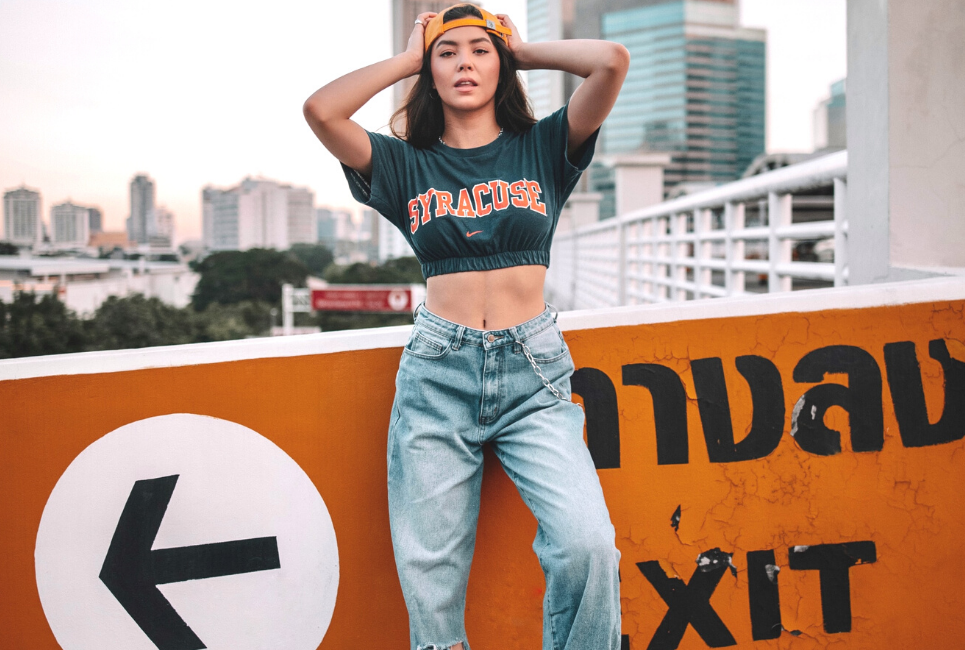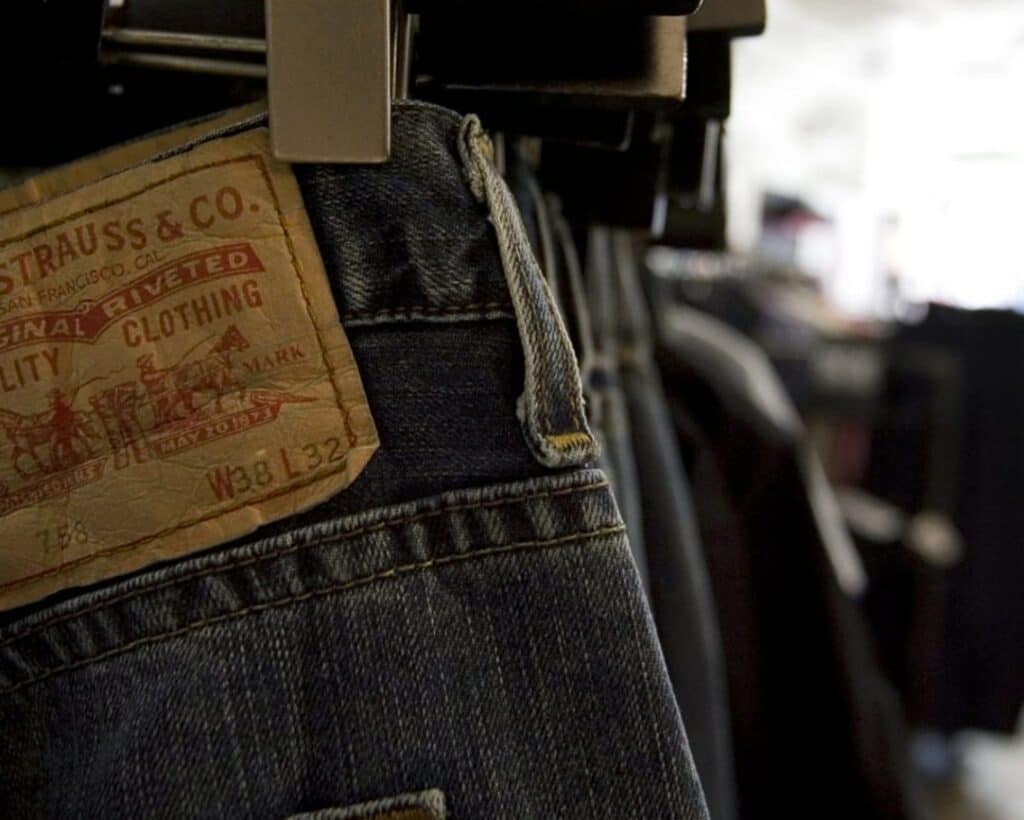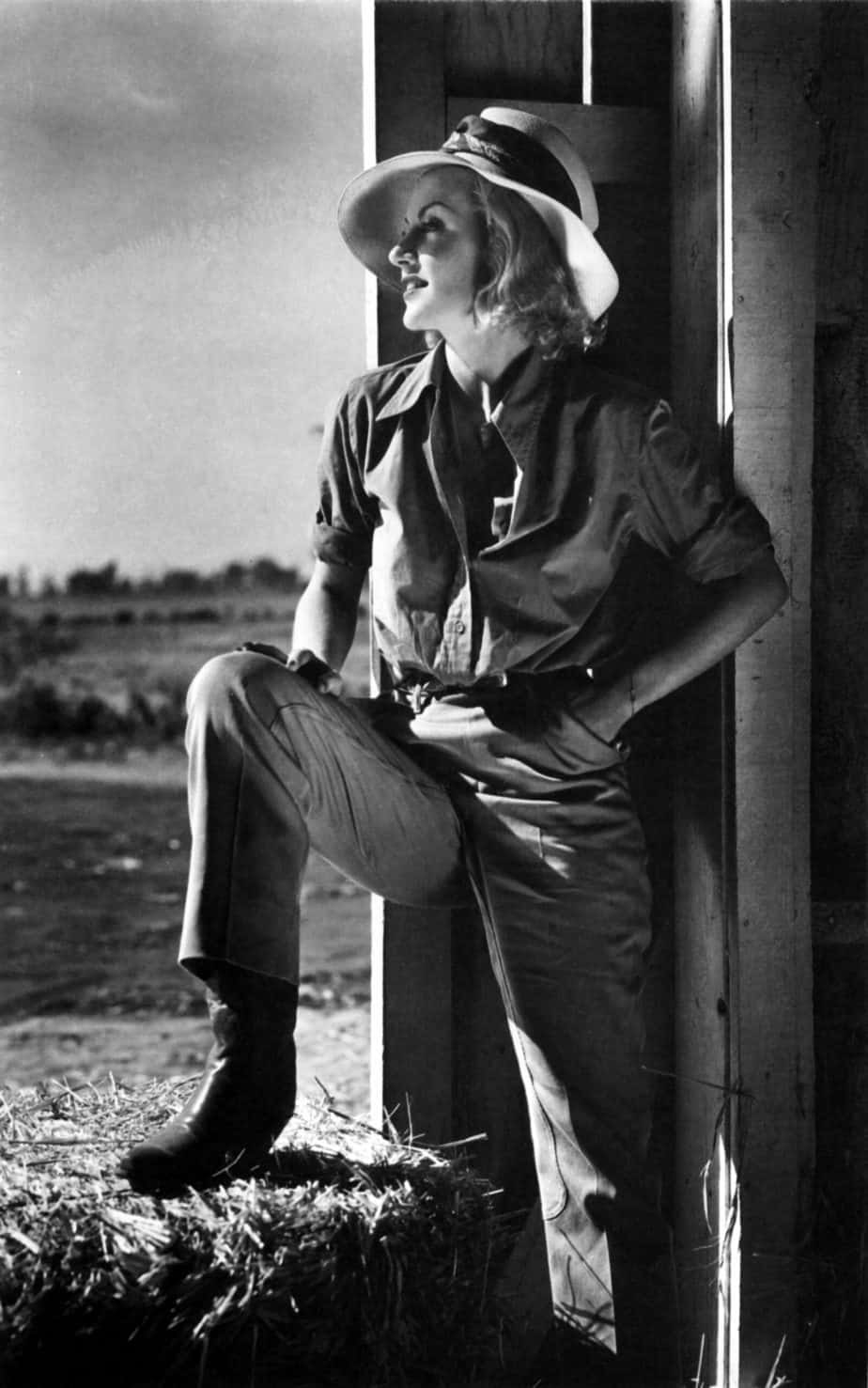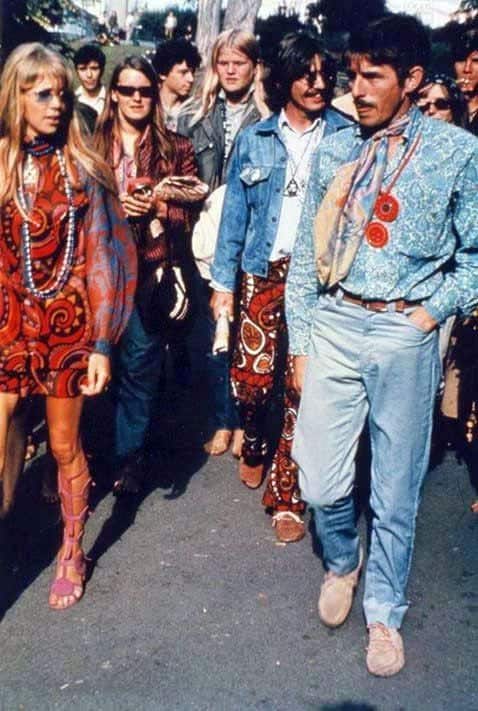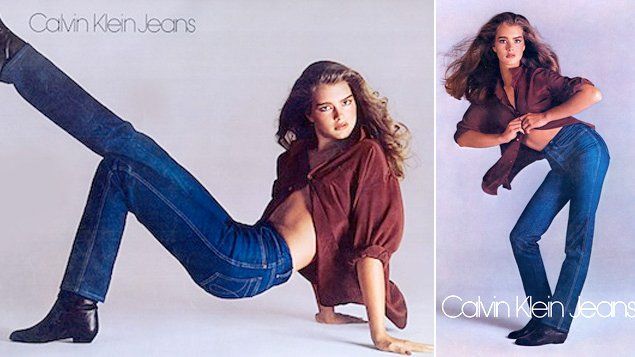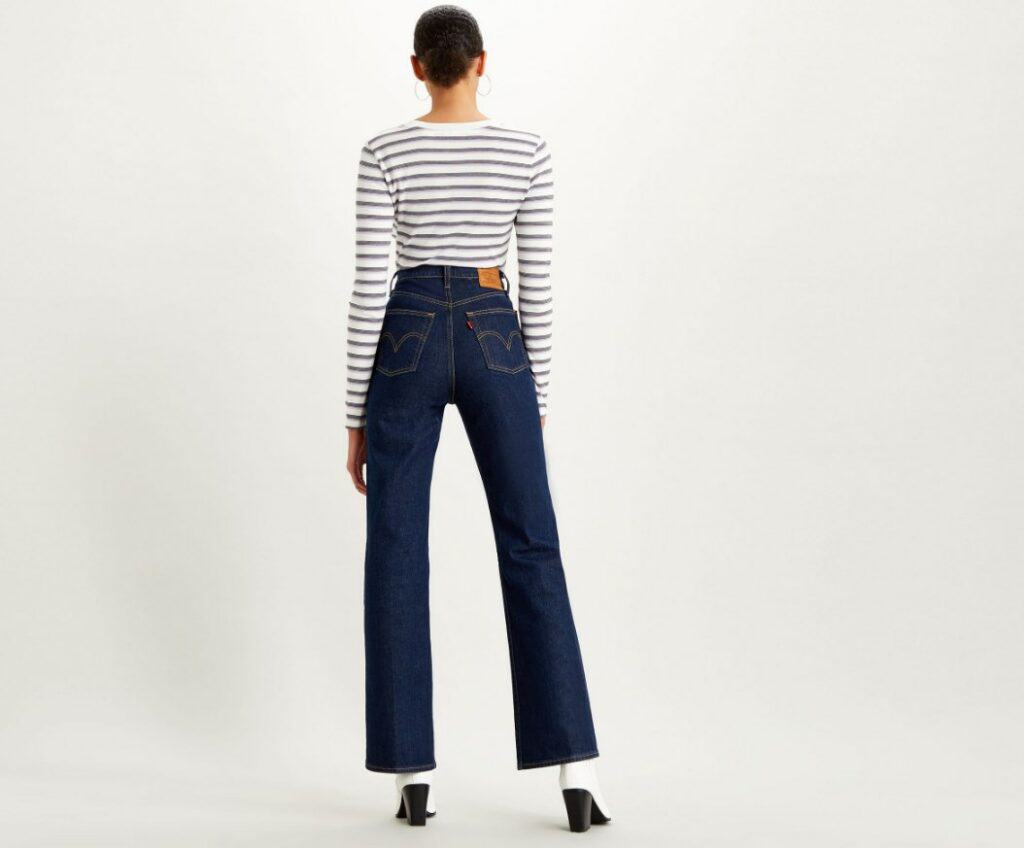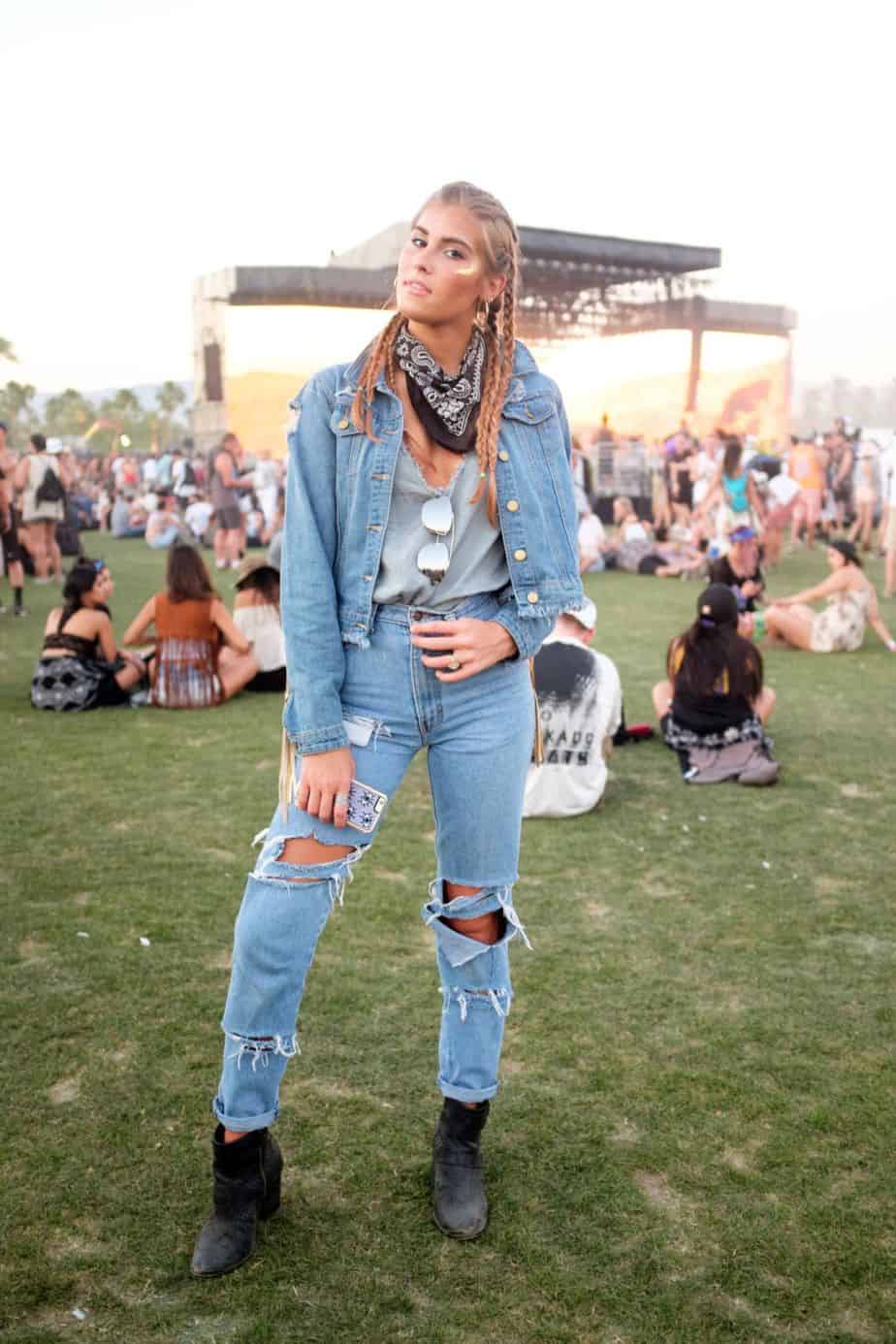- Bold, Crisp, and Elegant: White Boot Options For Your Closet, A Guide - January 3, 2022
- Sexy, Chic, and Elegant: Five Sheer Blouses You Absolutely Need - December 28, 2021
- 9 Cutest, Coziest Mock Neck Sweaters - December 23, 2021
Today, most brands make their jeans of denim fabric. But how did it all start? Some people attribute the creation of denim to manufacturers in France. It occurred this way: after experimenting with making different types of fibers, weavers in Nîmes, France, made this twill fabric that soon people started to call denim.
The earlier example of people using the word “jean” is from 1800. By then, people used the term referring to this specific type of cloth used to make trousers. However, the word hasn’t changed its meaning that much. Rapidly people were using the word as a way to define trousers. By the 20th Century, everyone used “jeans” to describe denim trousers and cotton ones.
From 1873 to 1890: When It All Started
1873 was one of the most significant years for the jean industry because it was the year in which Jacob David and Levi Strauss patented the jean. Jacob was a tailor, and Levi was the owner of a fabric house. Together, they started the blue jeans revolution that maybe didn’t take off that quickly at first, but it was going to take off really soon.
Because of how resistant they were, people who needed long-lasting and durable clothes wore jeans. Among this group of people were gold miners. This event was a significant change, the fact that jeans were changing workwear as people knew it. That’s one of the reasons the copper rivets existed, as a way to strengthen the pockets from any rips.
Of course, that was just one of the changes jeans went through. Some other changes include the double stitching in the fabric that also identified them as Levi Jeans. In 1922, the belt loops appeared. At first, jeans had a button fly, but manufacturers replaced them with a zipper in 1954.
But we are straying from the topic. Now, there’s still a mystery going unresolved. If the jean was patented by Levi, how is that every brand can make jeans? The patent ended in 1890.
That gave room to other brands and manufacturers to make jeans however they pleased. And yet, patented or not, jeans continued to be a type of cloth for miners, laborers, and maybe cowboys. It was not yet fashionable.
From 1920 to 1930: Hollywood and Its Power
Hollywood did a thing. You see, actual cowboys wore jeans. So, superstars that starred in movies as cowboys had to wear jeans. Yes, you heard it right. Western films were crucial on the steps of making jeans a mainstream type of cloth.
Gary Cooper and John Wayne were wearing jeans, and people loved them for it. Women also wore jeans, and an example of this is the actress Carole Lombard.
As a way to confirm that jeans were having their fame moment, one of the Vogue covers in the ’30s featured a model wearing denim. Even further, they called jeans “Western chic,” proving that jeans could work as a fashion statement.
Yes, they were still associated with the cowboys’ image, but that was finally something. It was the first time some renamed magazine saw in jeans the possibility of being fashionable.
1950 and 1960: Jeans Are A Rebellion Synonym, But Also A Peace One
By the 1950s, jeans were already neat, chic, and modern. Thank you, John Wayne and Carole Lombard. But also thank you to some other actors of the decade like the famous heartbreaker James Dean, who made boxy cuts popular as soon as he appeared on camera wearing them.
With that starting point, jeans were more associated with rebellious youth, and it was that big of a movement that some schools even banned students from wearing jeans. Can you imagine? Now jeans were a synonym of going against the rules, a protest symbol. But this only made them even more attractive.
The hippie movement started in the ’60s, and since jeans were trending at the time, the movement also included jeans. Some designs trending were the low-rise jeans and bell-bottoms jeans. People liked to decorate their jeans with patches, embroidery, and self-made painting.
1970: Jeans Are Actually Sexy?
By the 1970s, as fashion was changing, the jeans changed too. Women like model Lauren Hutton and actress Farrah Fawcett wore jeans. By this decade, people started to use some kind of cut-off jeans called Daisy Dukes.
If you’re wondering, the style came from a character with the same name from the TV show The Dukes of Hazzard. Daisy used extremely short shorts in the show, and it rapidly became a trend.
Women were starting to embrace their sexuality, and it showed in the clothes they wore. The clothes started to be more fitting, and that included jeans. Feminists also wore them to their rallies as a way to fight for gender equality.
As we are ending the 70s, another great success happened. Calvin Klein presented jeans on their runway. It doesn’t sound like a significant achievement if you hear it today, more than 40 years later. But at the time, it was.
Calvin Klein made history. They were marked in history as the first designer brand that had jeans. What’s better, the jeans were a commercial success.
1980 and 1990: Seductive and Comfortable
Now, we go to 1980. Calvin Klein was still in the lead. The success in the 70s had already given the jeans a seductive tone and proved that women could be beautiful while wearing jeans.
Society started to believe it, and Calvin Klein accentuated it by having Brooke Shields in one of their more controversial campaigns. After that, all kinds of designer brands wanted to have jeans in their collections too. Some of these include Gloria Vanderbilt, Guess, and Jordache.
And, since we are talking about stone-washed jeans, these two last decades (the 70s and 80s) were super important. People finally introduced stone-washed jeans, and from then until now, people kept wearing them.
As music and culture changed, so did clothes. By the 90s, hip-hop music was widespread. Hip-hop style included super oversized and baggy jeans. It was a significant change from years back when tight clothing was at its peak.
Mom jeans are the type of high-waisted jeans that fit well on the waist but are kind of baggy on the rest of the body, and they were fashionable back then (and women started to wear them again in the last few years!). However, even when those styles were the most prominent, every group and subculture had its own way of wearing jeans.
For example, hipsters liked to dye their jeans a darker color. Pop stars wore their jeans with some whiskers (aka, crease lines, especially in the front pocket). Jeans could be anyway and form you wanted.
The 2000s, 2010s, and Present Day
Now, let’s go to the 2000s. We have Britney Spears, Christina Aguilera, and Destiny’s Child. All these pop divas popularized the extra low rise jean as a way to look sexier. Another type of jeans that were trending was the bootcut and flared styles. Other styles like the retro Capri jean started to be popular in the mid-2000s.
By the 2010s, the biggest achievement was skinny jeans. They were really popular in this decade, and almost everyone wore skinny jeans whether to go to work or a casual date at night. Skinny jeans were for everyone.
By this time, music festivals grew in popularity. And even when their principal purpose was to make people enjoy music, people also took advantage of the opportunity to show their best fashionable clothes without being judged. All of this started a whole new fashion term: festival wear.
Now, talking more about the present day, there is a lot of variety. You could say it is a mix from the other decades since mom jeans are trending again, but some women prefer skinny jeans or boot-cut jeans.
Whatever the cut, the high-waisted part predominates in most jeans in today’s fashion. In any way, they all can be used and can be fashionable if you pair them in a good outfit.
Frequently Asked Questions
Answer: As stated at the beginning of this article, the masterminds behind this famous creation (no, we are not exaggerating. Yves Saint Laurent always said he wished he had invented blue jeans) were Jacob Davis and Levi Strauss. The goal was to create practical workwear.
And they achieved it! The denim fabric made jeans resistant and perfect for this kind of work. But like everything new in the market, the jean needed some upgrades. Then, the workers complained about their pockets ripping off, and that was one of the reasons why Levi invented their popular copper rivets.
Most changes made in the first 50 years of the jean’s history were related to the needs of the workers. That included the famous indigo color of jeans.
Answer: Even now, when people think about jeans, they imagine blue jeans. Sure, there are black jeans and grey jeans and jeans of any color you might think of. But the classic ones are blue.
How did this take off? The rumor says the jeans were blue for the laborers and miners. That way, they could hide any dirt while, yes, you guessed it, they were working.
For its history, here is a brief timeline of the indigo dye:
Approximately 300 years BCE, indigo was produced and distributed by India. Blue dyes were rare, so this was an important activity that provided India with economic goods because they charged heavy tax duties. It might be hard to think about blue dye as a luxury, but at the time, it was.
Fast forward to some centuries later. Vasco da Gama was a Portuguese explorer who discovered a way to enter India by the sea in 1497. This way, buyers could skip the tax duties, so blue dye became popular in all of Europe. But since this blue was still all organic and natural, getting it was still expensive.
Adolf von Baeyer was a chemist. It took him almost 20 years to make synthetic indigo dye, but he finally achieved it in 1883. However, this indigo blue dye only began its mass production in 1897. This color was easier and cheaper to produce. Besides, the color lasted longer.
Answer: In fashion, there are lots of reasons why a piece of clothing becomes popular. It can be because a specific celebrity is wearing it or as a statement from a social movement. However, jeans are a mix of all of that and much more.
They’re durable. You already read it in the jeans’ history. Brands made jeans to be long-lasting! Denim is one of the few fabrics that provide you with that.
They’re comfortable. What can be better than that? You’re in style while being comfortable on your skin.
It’s easy to take care of them. Most jeans brands agree it’s better to not wash them too often and that it’s better to wash them after wearing them a couple of times. It might sound gross, but at the end of the day, it’s all up to you.
You have endless options. I’m sure you have noticed it by now, but there are lots of jeans varieties. There are different cuts, cuffs, and styles — and for all body types. It’s impossible to not find a pair of jeans that suits your needs.
Versatility. There is not much to say about this. Jeans might be one of the few types of clothing that looks good with literally everything.
They’re stylish. Jeans have been trending over the last 50 years or more. You don’t have to worry about looking out of style with them.
All of these reasons make jeans the to-go clothing all women must have in their wardrobe.
Answer: As with everything in life, yes, there are some, but they are very few compared to all the advantages. Still, they are worth reviewing.
Some jeans are pricey. But some others are not! You have to be careful with this because some jeans can be high in price but not because they’re actually good, but just because of their brand. Remember, paying more for a piece of clothing doesn’t mean it’s better.
The dye can go off. Some people recommend washing your jeans right after buying them because the color can be really saturated, and it can rub off easily if you’re not careful. Other tips include washing the jeans separately at first. This tip is just to make sure they don’t dye your other clothing by mistake.
The manufacturing process endangers the environment. Making denim is an unsustainable process because of how much water it wastes. If we talk about pollution, denim is one of the worst materials to make ever.
There are some health risks. This is only half true if the jeans are tight (also called really skinny jeans,) but it is also worth mentioning. Studies say that women wearing tight jeans put them at risk of developing vaginosis, a bacteria infection in the vagina.
For men, in the last decades, there have been studies trying to show the correlation between infertility and tight jeans, but scientists haven’t found anything too conclusive. So while wearing jeans is mostly safe, do just make sure you’re wearing the proper fit.
Answer: We all want our favorite jeans to last forever, and luckily for us, there are some ways in which you can make them even much more durable.
Use a proper detergent. Some detergents include bleach, and of course, you will want to avoid any of those. The best detergents for jeans are the ones specifically made for darker clothing. That way, the dye won’t rub off.
Turn the jeans inside out. You see, the part that needs washing is the one that is in contact with your skin. Besides, doing it this way will protect the exterior of the fabric.
Wash your jeans with any other dark type of clothing. If you wash your pair of jeans with lighter items, you are at risk of ruining them.
If you can, use a gentle cycle. Today, most machines have a gentle cycle. However, if you don’t have one, the best you can do is to wash the jeans by hand.
Final Thoughts: A History of Jeans Guide
Now that we know all of this, one of the main questions we have is: what will happen in the future of jeans? One of the main concerns right now is the sustainability of it all. We discovered that making jeans is terrible — it literally destroys our environment.
Do jeans brands and manufacturers acknowledge this? Fortunately, some of them do. For instance, both Jack & Jones and Wrangler have tried to make their jeans leaving a green mark on them. This is, making them with recyclable denim or using low-impact techniques.
Either way, it seems like we have a long way to go until more brands get encouraged to do this. We hope that in the future, we find more brands trying to make their products sustainable.
And that is everything for today! We hope that you have learned something new about all of this, and the next time you slip into your favorite pair of jeans, you’re able to keep its fascinating and diverse history in mind.

